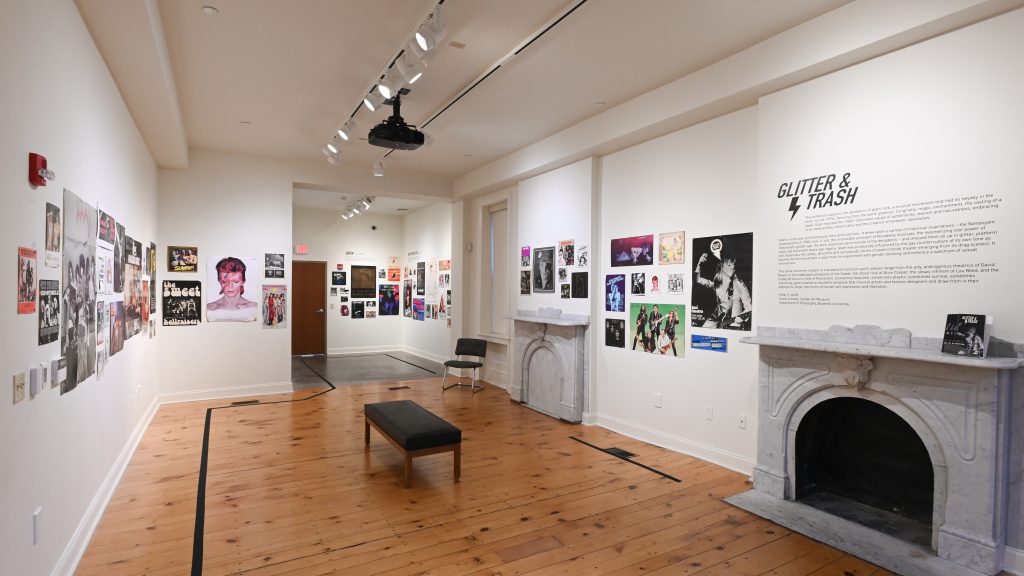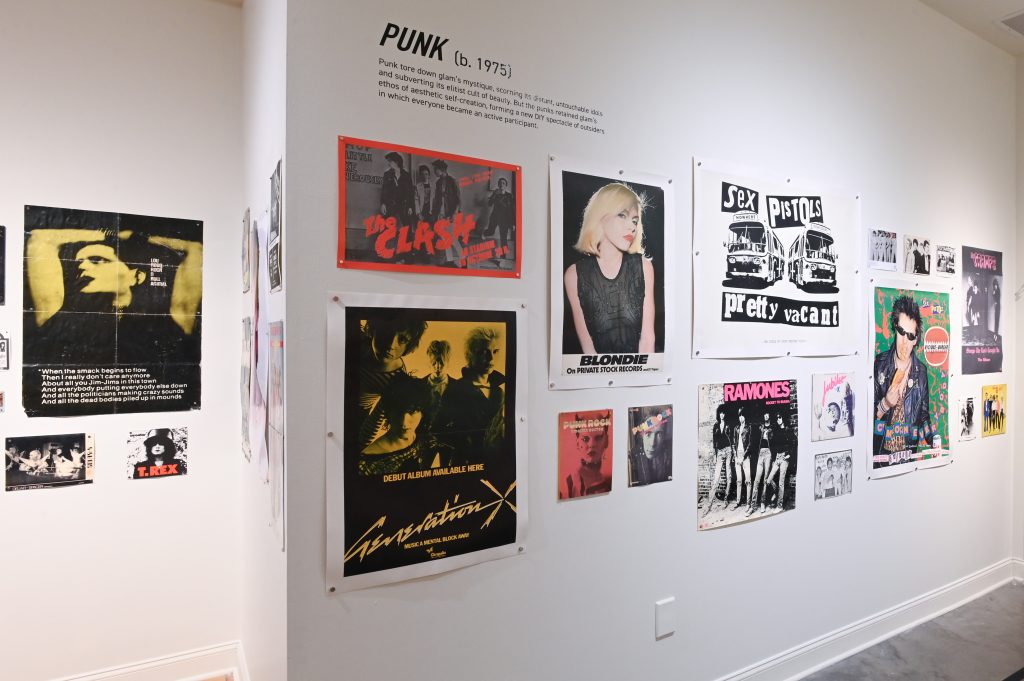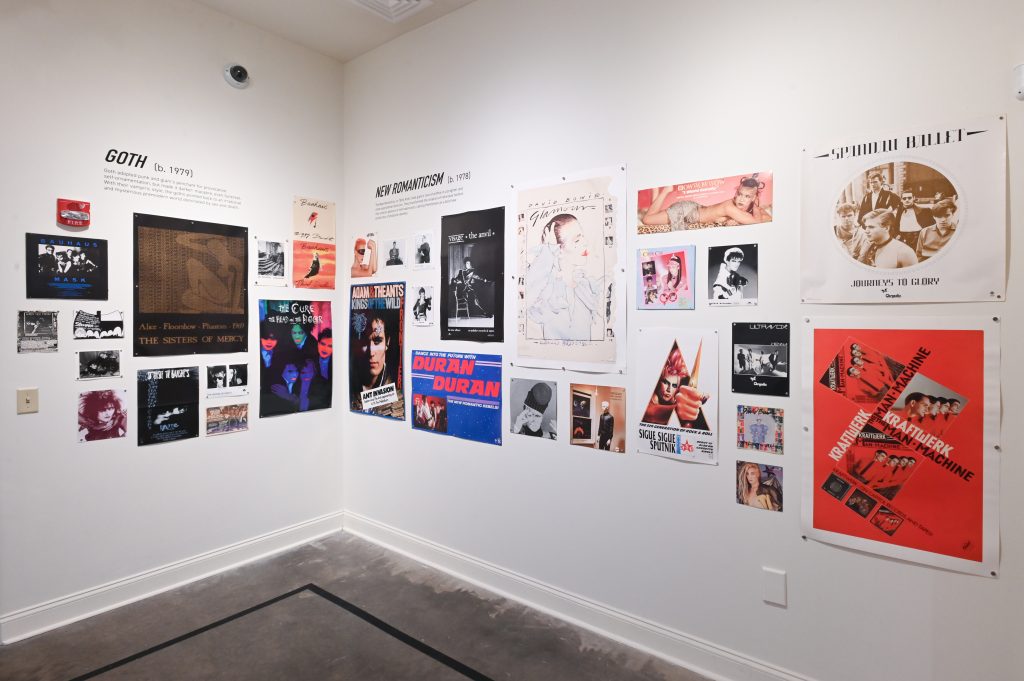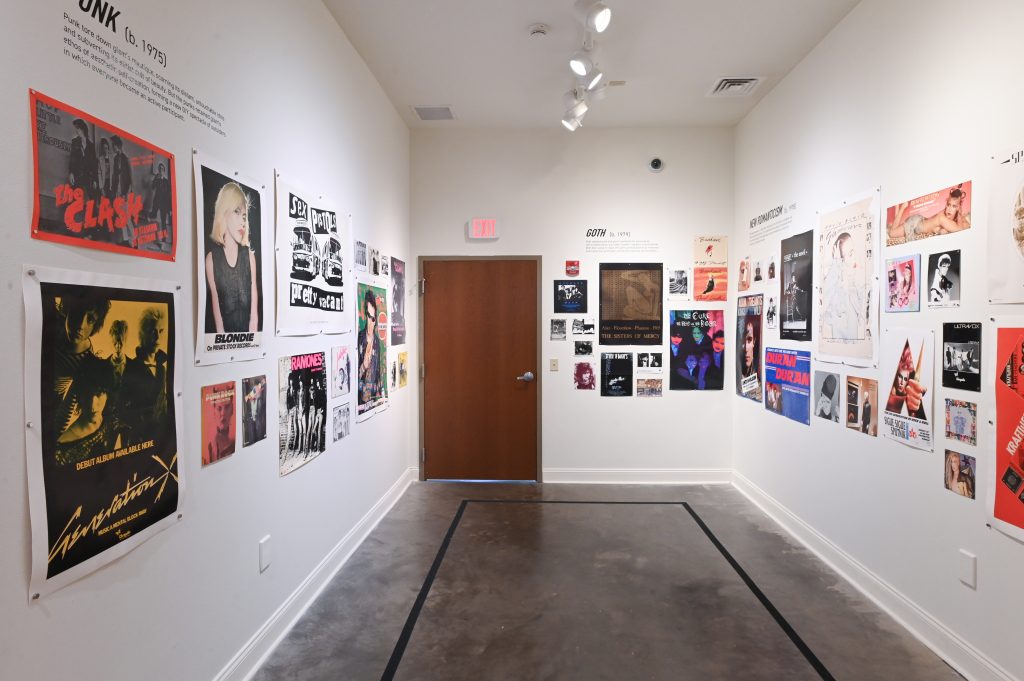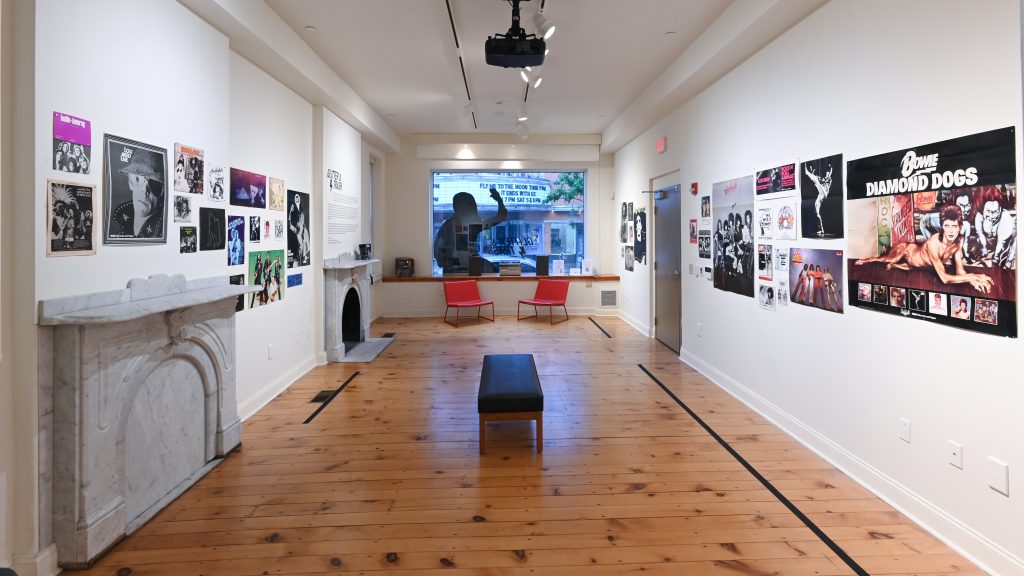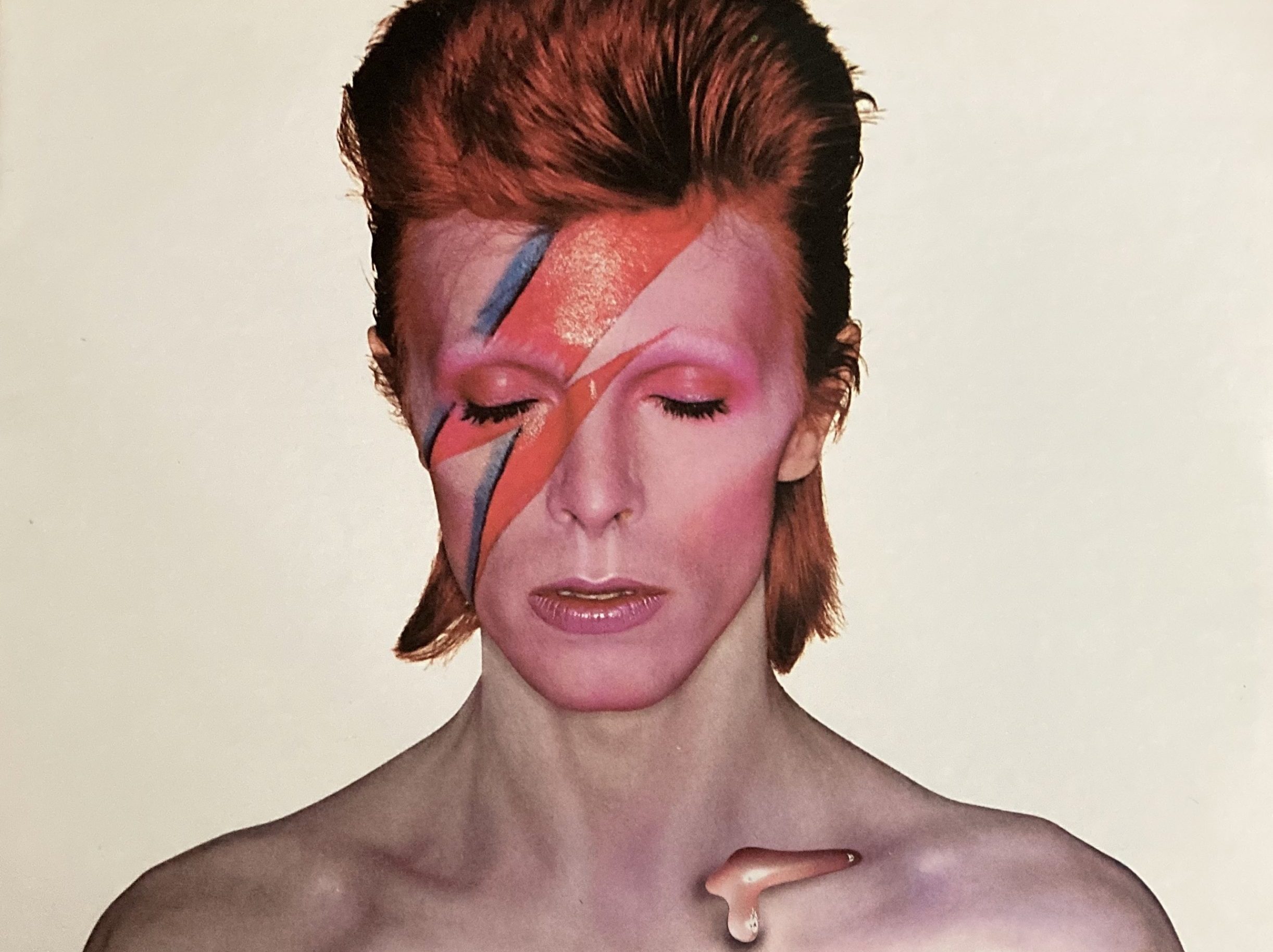September 14 – December 01, 2024
About:
Explore the surreal and gritty world of Glam Rock in this exhibition of original posters, prints, and album covers and then follow Glam’s echoes into Punk, Goth and the New Romantics. In addition to the visual expedition, explore a curated selection of essential Glam Rock records at our vinyl listening station.
**A special thanks to Peter S. Groff, Guest-Curator of Glitter & Trash, Department of Philosophy, Bucknell University and Andrew Krivine for loaning his Glam Rock ephemera collection to the Samek Art Museum for this exhibition.
Related Events:
Glitter & Trash Bash
Saturday, Sept. 14, 6 p.m.
Downtown, 416 Market St., Lewisburg, PA 17837
What started in the United Kingdom in the early 1970s comes to Lewisburg, PA. Immerse yourself in the Glam Rock era’s ephemera, groove to music characterized as “*offensive, commercial, and cultural emasculation,” DJ’d by guest curator Pete Groff, and savor some snazzy treats. Feel free to model your glitter and satin.
*scholars I. Tayor and D. Wall
Curatorial Text:
This exhibition explores the aesthetics of glam rock, a musical movement that had its heyday in the early- to mid-1970s. Deriving from the word ‘glamour’ (originally: magic, enchantment, the casting of a spell), Glam rejected the 1960s’ cherished values of authenticity, realism and naturalness, embracing in its stead artifice, theatricality and the creation of fantastic spectacles.
Glam’s vision was simultaneously retro and futuristic. It drew upon a variety of historical inspirations – the flamboyant showmanship of 1950s rock ‘n’ roll, the irresistible schmaltz of Broadway musicals, the mesmerizing star power of Hollywood’s golden age, the dark, seductive demi-monde of the decadents – and dressed them all up in glitter, platform boots and outlandish space-age regalia. Glam was profoundly influenced by the gay counterculture of its own time as well (especially the campy, absurdist and self-parodic forms of experimental theater emerging from its drag scenes). It became the first movement in pop music to experiment with gender-bending and embrace a spectrum of sexual orientations.
This show conceives of glam in a broad and inclusive spirit: pieces range from the arty, androgynous theatrics of David Bowie, to the bubblegum pleasures of the Sweet, the shock rock of Alice Cooper, the sleazy nihilism of Lou Reed, and the freaky Afrofuturist funk of Parliament. Sometimes beautiful, sometimes playful, sometimes surreal, sometimes disturbing, glam created an aesthetic template that musical artists and fashion designers still draw from in their attempts to forge new forms of human self-expression and liberation.
Peter S. Groff
Guest-Curator, Samek Art Museum
Department of Philosophy, Bucknell University
Punk (b. 1975)
Punk tore down glam’s mystique, scorning its distant, untouchable idols and subverting its elitist cult of beauty. But the punks retained glam’s ethos of aesthetic self-creation, forming a new DIY spectacle of outsiders in which everyone became an active participant.
Goth (b. 1979)
Goth adopted punk and glam’s penchant for provocative self-ornamentation, but made it darker: macabre, even funereal. With their vampiric style, the goths pointed back to an irrational and mysterious premodern world dominated by sex and death.
New Romanticism (b. 1978)
The New Romantics, or ‘Blitz Kids’, took glam’s love of artifice in a brighter and more aspirational direction. They transformed the creation of individual fashion into a heroic gesture of self-expression, casting themselves as a bold new aristocracy of postpunk dandies.
Installation Images:
